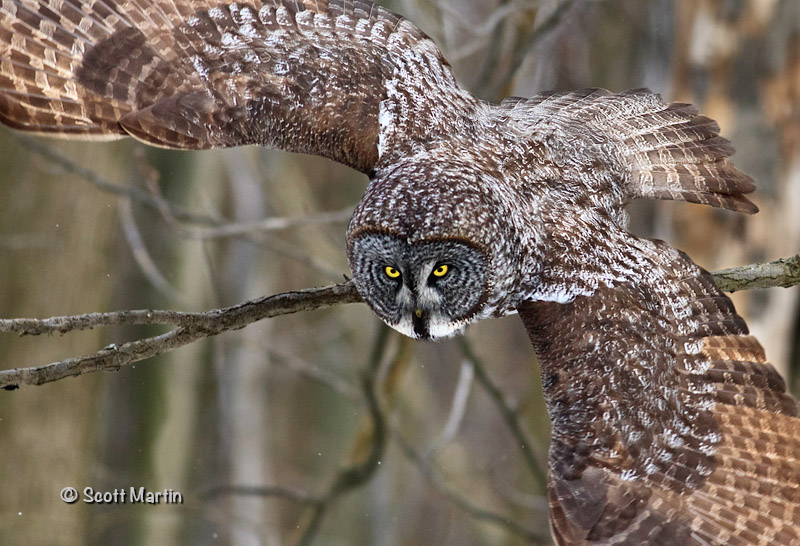
by Scott Martin Photography | Jan 24, 2012 | Birds, Blog, Raptors
Recently I posted an image of a Great Gray Owl that showed up in Kingsville Ontario (on the shores of Lake Erie between Point Peele and Windsor) which is very unusual. The Great Gray Owl is a northern bird and although common in Northern Ontario they are rarely seen south of Timmins. This particular owl arrived in Kingsville before Christmas and was seen almost daily until a couple of weeks ago so perhaps it has started to head back north. It was certainly a local celebrity and even made the front page of the Sunday edition of the Toronto Star
The Great Gray Owl is North America’s largest owl with a length of almost three feet and wing span of five feet. It is a beautiful collection of gray, brown and white colours with a large and interesting head which lacks ear tuffs, has brilliant yellow eyes that are relatively small compared to the other owls and sports a white moustache. Although the Great Gray is the largest owl, it is not the heaviest. The Great Horned Owl enjoys that distinction. Owls are raptors and the Great Gray Owl’s diet consists primarily of Ptarmigan in the north, however when poor food supply in the north forces the owls into more southern areas they feed primarily on voles, mice and perhaps chipmunks or squirrels.
I was fortunate to be able to take some flight shots of the Great Gray Owl. This first image was taken when the owl launched while I was photographing with a 500mm lens from a distance too close to keep the wings in the frame. Although clipping the wings in flight shots is a bit of a “no no” the intensity of the eyes in this shot was enough that I just couldn’t delete the image.

The next two images were taken with a 70-200 f/2.8 L IS zoom lens which is a fairly fast focussing lens needed to track birds while flying. It’s an amazing technology that allows the camera to “lock on” to a moving object and continually keep it in focus while taking about ten frames per second. In these images you can easily see the intensity of the eyes as they lock on to the prey.
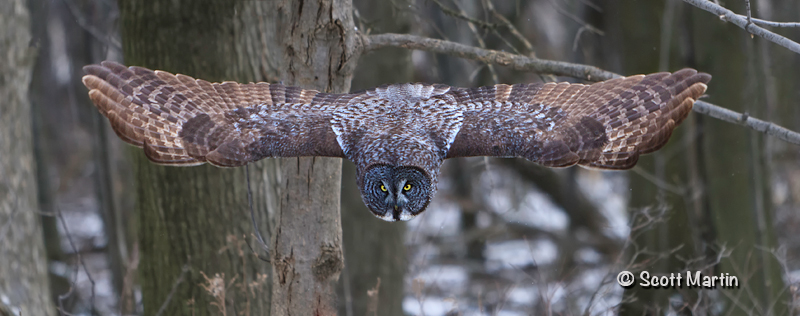
.
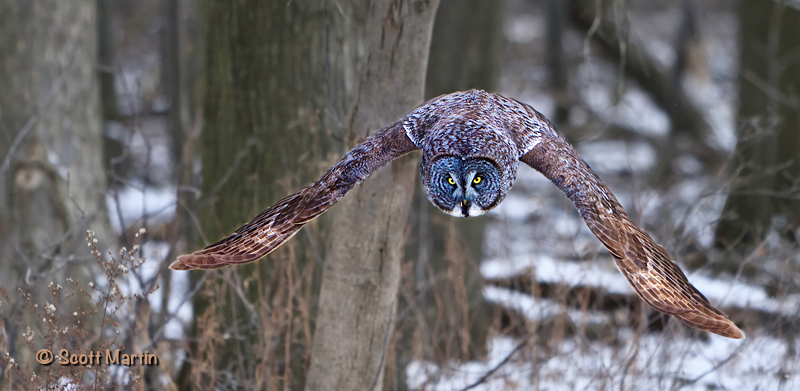
The face of an owl is rarely seen as we don’t often get a chance to be close enough to witness the amazing details it contains. This close up portrait was taken with a 700mm focal length lens from about thirty feet away from the owl.
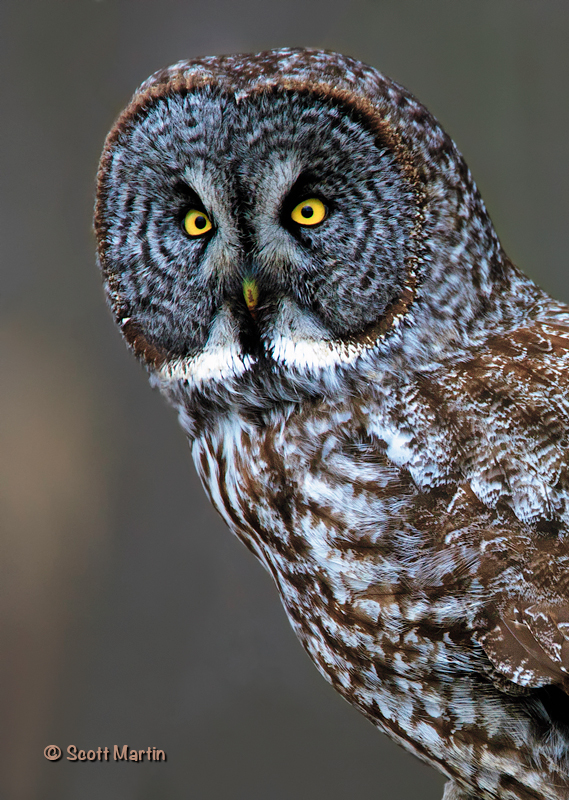
And finally a portrait showing the Owl in its more natural habitat, the snowy winter climate of the Canadian North…..I just wish the flakes were a little larger, but it only snowed for about five minutes over the course of the day I was there.
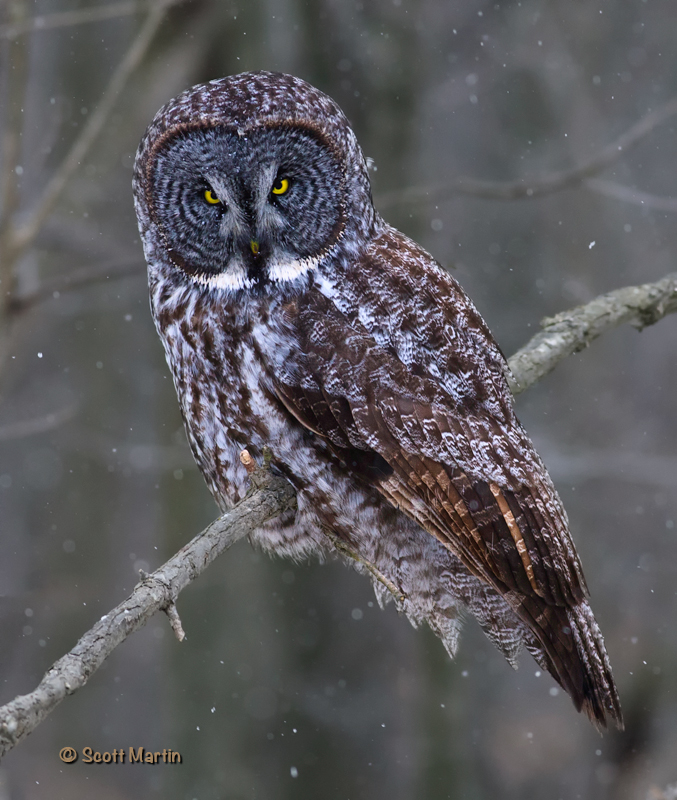
I trust you enjoyed these images of the Great Gray Owl and if ever you hear about one in your area make sure make an effort to get out and see it. You will be glad you did! To see more owl images please click here to visit my gallery.
Please feel free to leave comments or ask any photography questions you may have regarding the posted images. I would be honoured to hear from you and answer your questions.
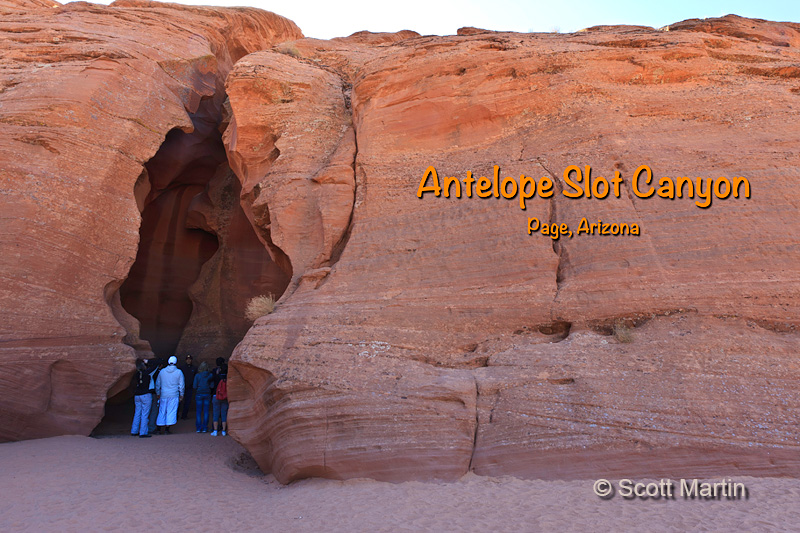
by Scott Martin Photography | Jan 14, 2012 | Blog, Landscapes, Naturescapes, Travel
The Antelope Slot Canyons, located on Navajo lands just outside Page Arizona are arguably the most famous and picturesque slot canyons in the world. The canyons are accessible only with a Navajo guide and a specialized 4×4 truck transports you the last couple of miles from the nearest road to the canyon entrance. We used the services of Caroline Ekis who owns and operates Antelope Canyon Tours. They have dedicated photography tours which limits the number of participants to eight at a time which makes it a bit easier to set up gear, however many other tour groups are also in the canyon at the same time so the biggest challenge is getting a shot without someone walking in front of the camera during the 20-30 second time exposures required in the canyon.

.
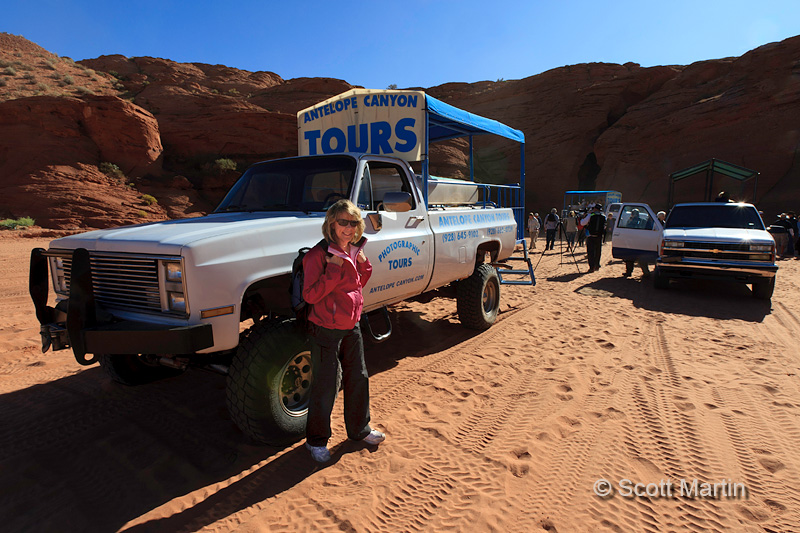
There are two Antelope canyons, the upper canyon which the one we visited and the lower canyon which is close by however requires one to climb down steep stairways to enter and leave the canyon. The slot canyons are formed when flash floods caused by rain storms during monsoon season rush through the sandstone mesas and literally carve the slots through the sandstone. Once the slot is formed, subsequent flooding travels through the same path making the slots deepen over time. Presently the Antelope Slot Canyons range up to 120 feet deep. The Upper Canyon is a little over 1/4 mile long and ranges in width at the bottom from less than three feet to fifteen or twenty feet in some places. If you are interested in more information on the canyons, here is a link to the Wikipedia Antelope Canyon site.
Photographically its a challenge in the canyon for a number of reasons, low available light necessities long exposures and good low light techniques (especially at the low ISO’s and small apertures required to minimize noise and maximize depth of field); the tall yet narrow slot requires a wide-angle lens (I used a 16-35mm lens 95% of the time); the EV variation between the top and bottom of the canyon makes exposure bracketing and the use of ND grad filters mandatory; avoiding people and protecting your tripod from getting bumped during exposure was a constant challenge.
Below are some images taken during the two hours we were allowed to remain in the canyon. The first is the entrance way where there is still lots of light.
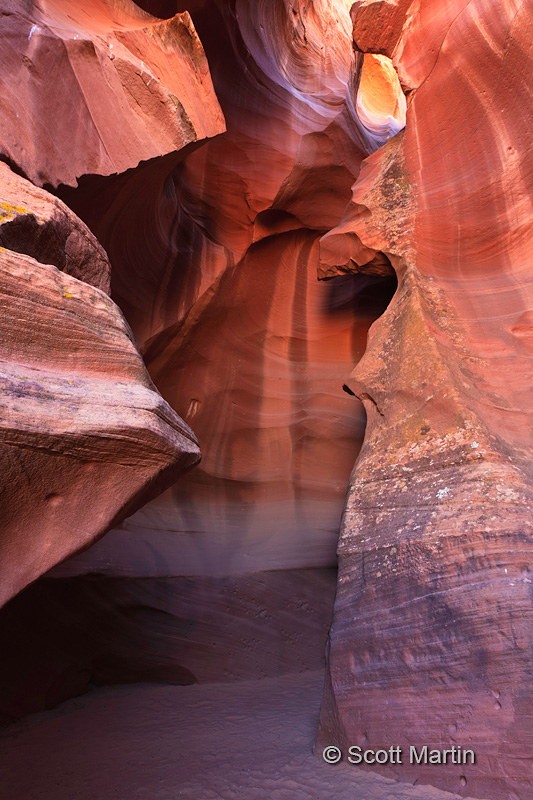
.
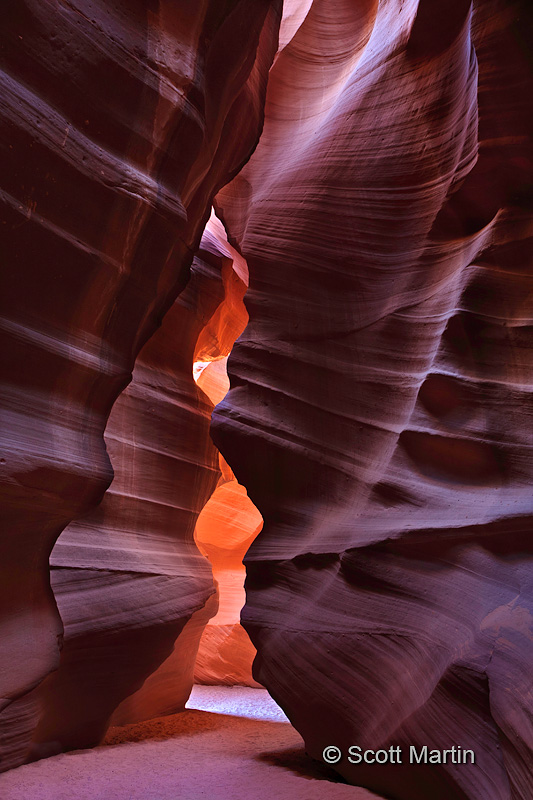
.
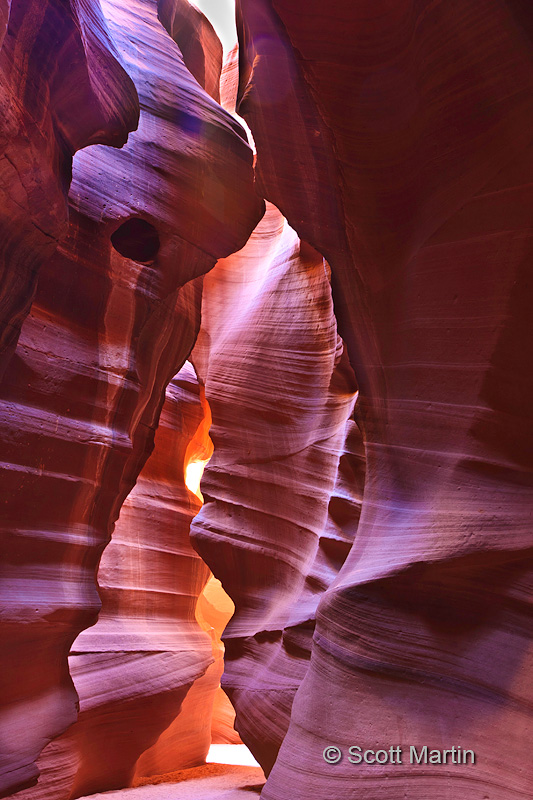
.
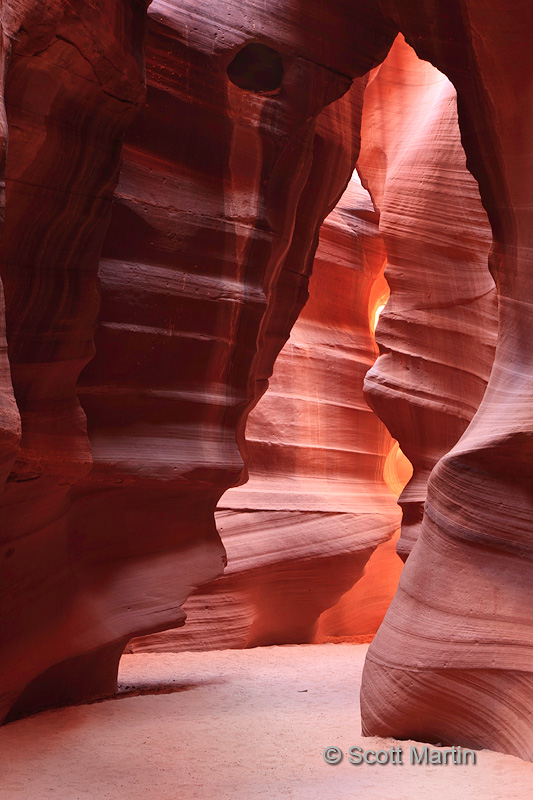
.
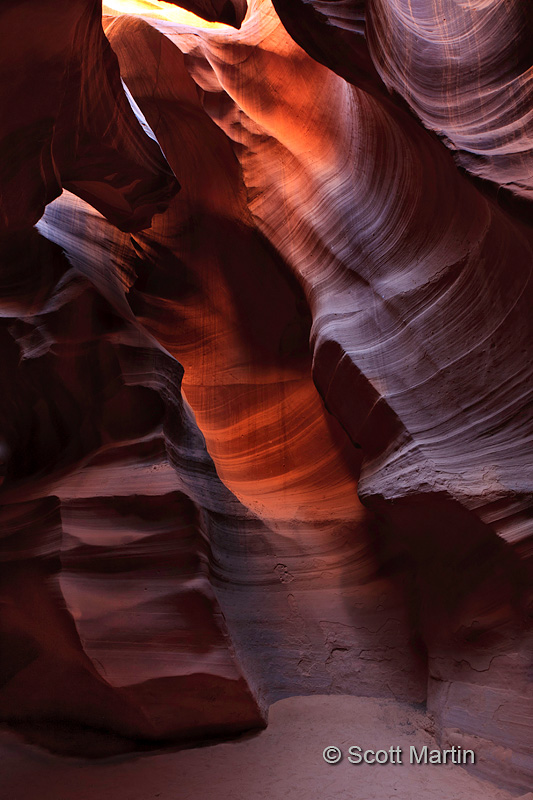
.
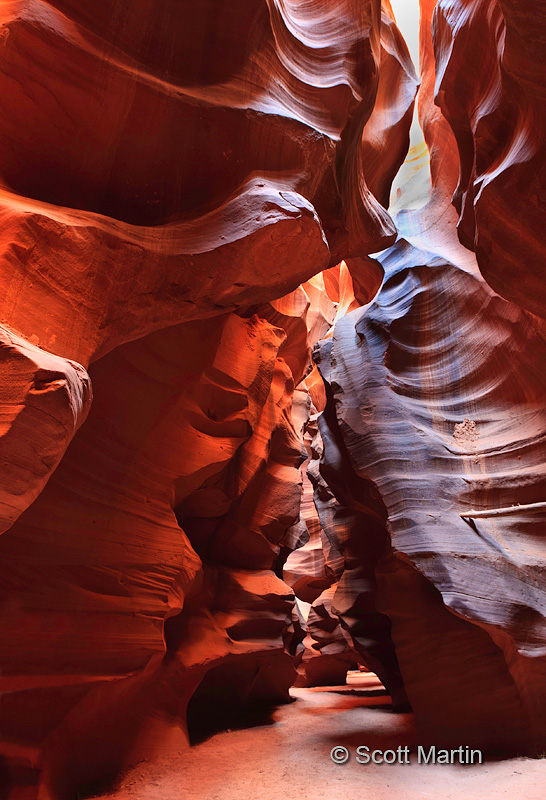
The stick on the right of the image below would have been deposited when the last storm waters moved through the canyon.
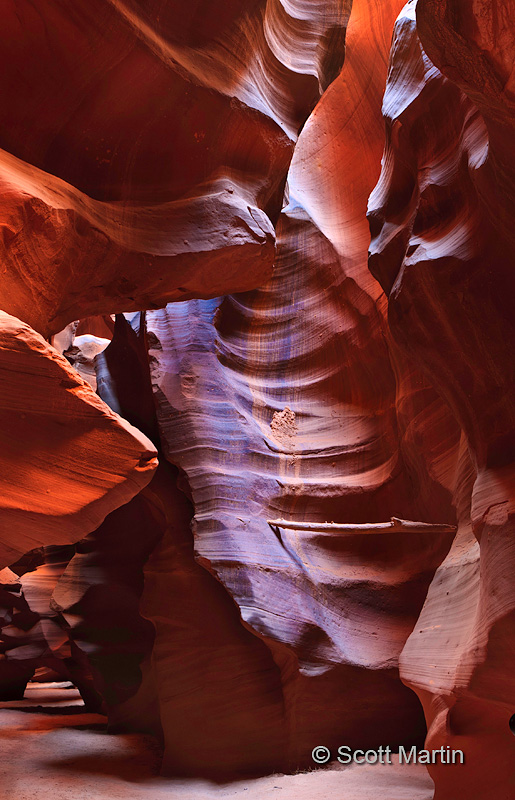
.
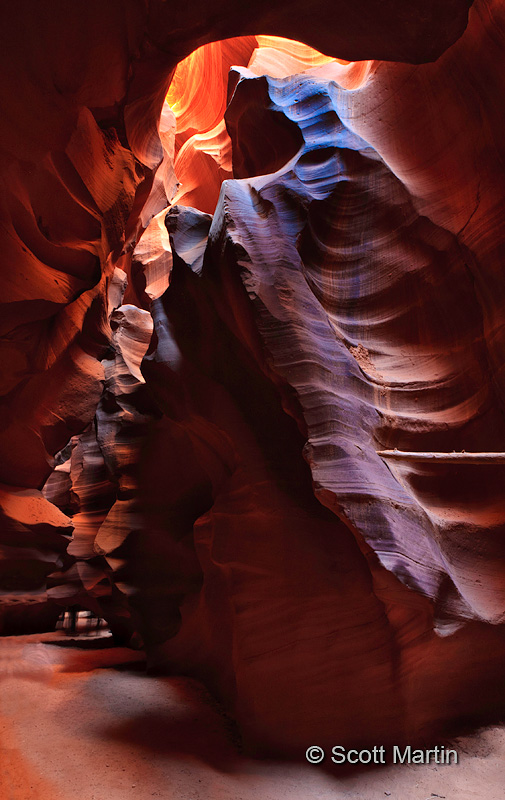
.
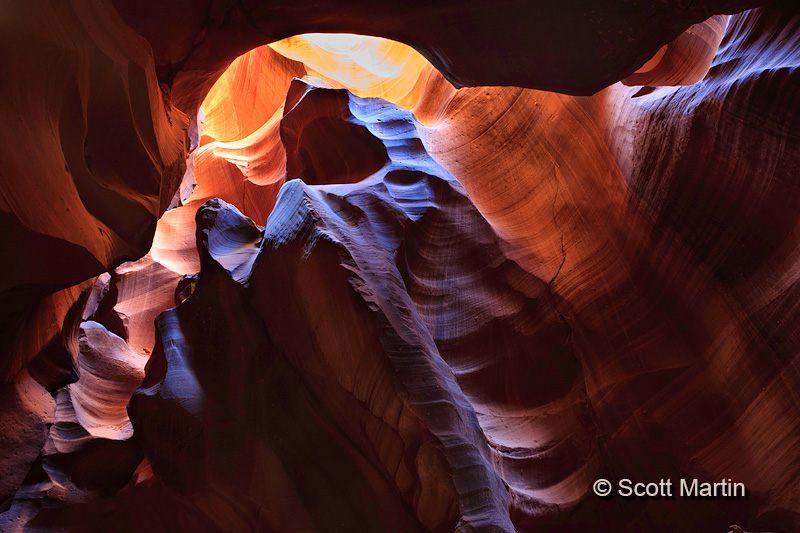
.
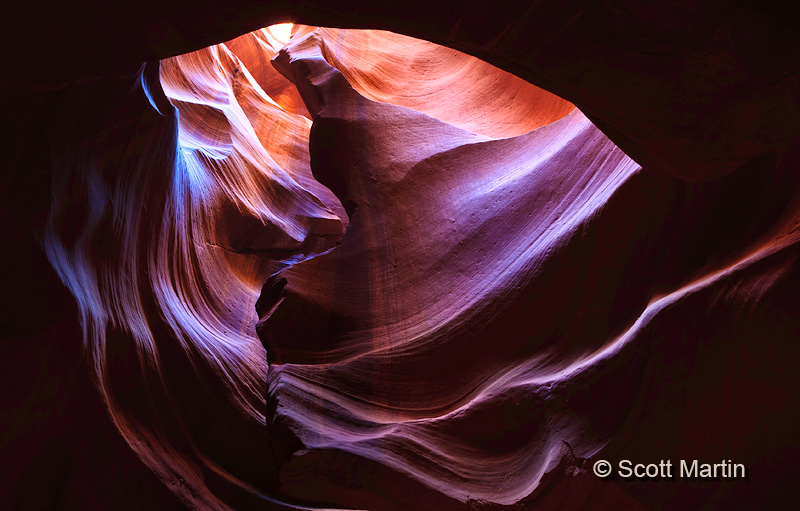
.
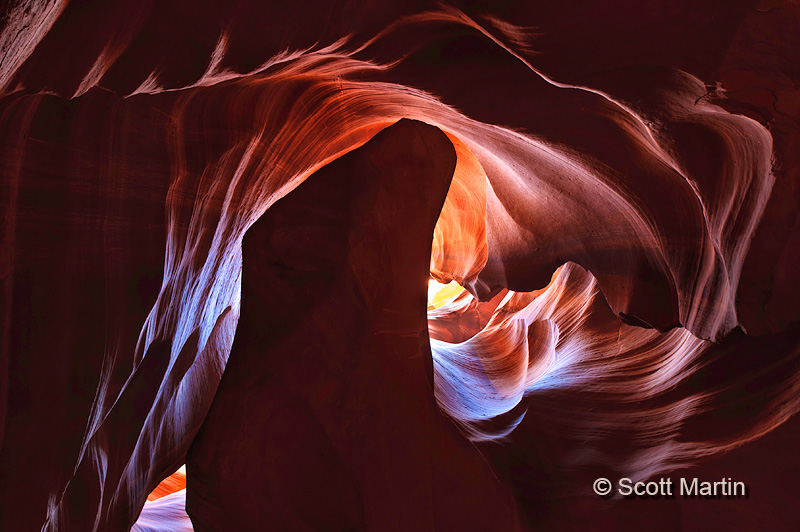
This next image is of the Antelope Canyon waterfall which is created by throwing a huge handful of sand on the rock wall and taking advantage of the long time exposure to create the waterfall effect.

The next few images are my attempt to be creative, which is always a challenge. The following two images are the same except for the exposure time is much less in the first therefore bringing out the deep blues and violets in the rocks.
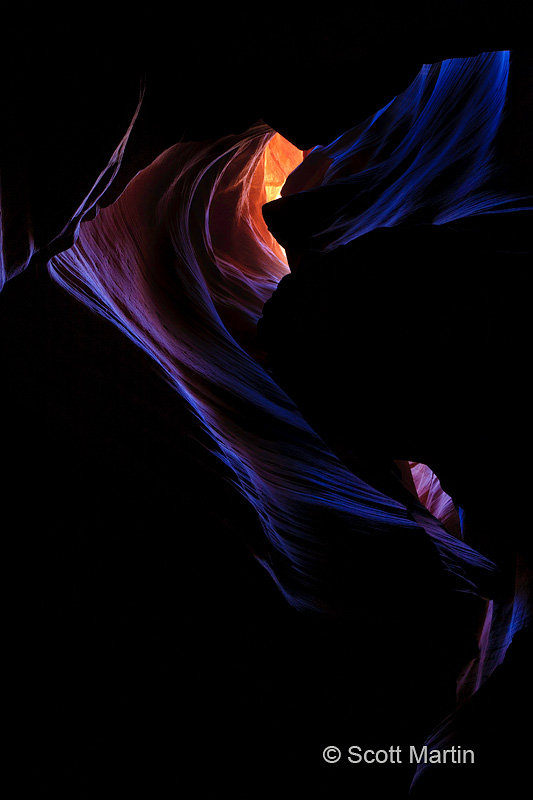
.
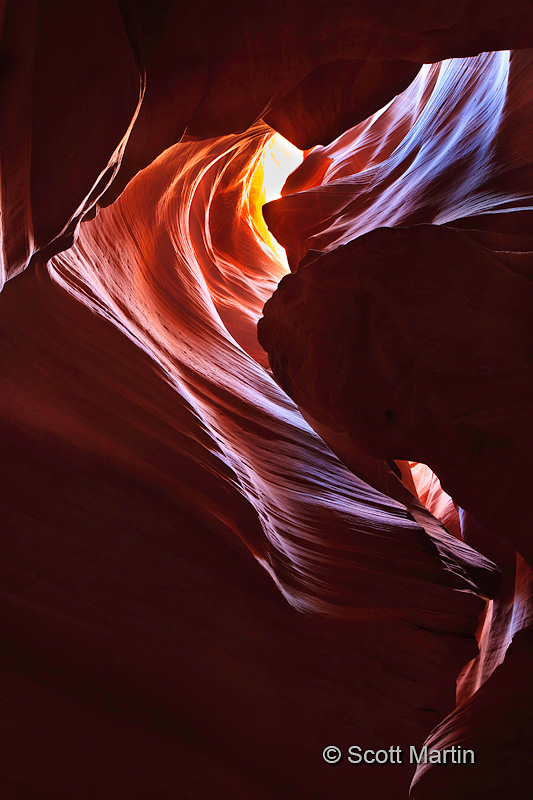
.
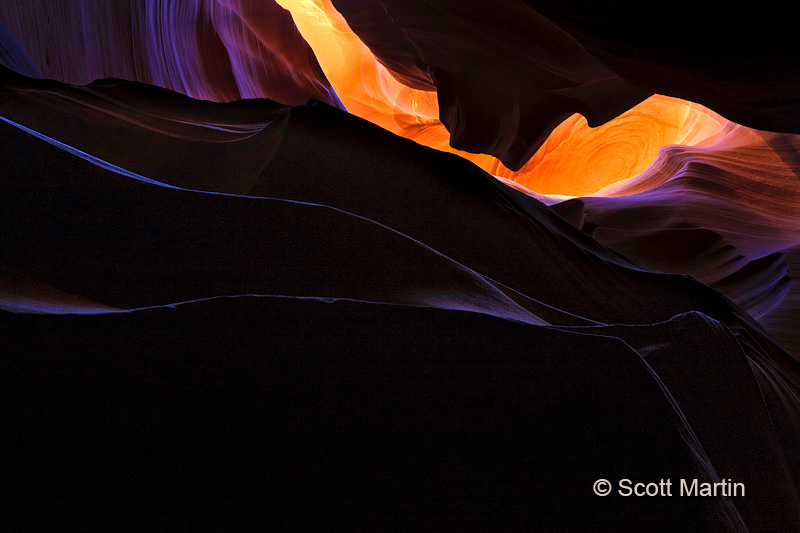
This last shot is the far end of the slot canyon. It took almost two hours to work our way from one end to the other and about ten minutes to rush back through the slot and back to the truck.
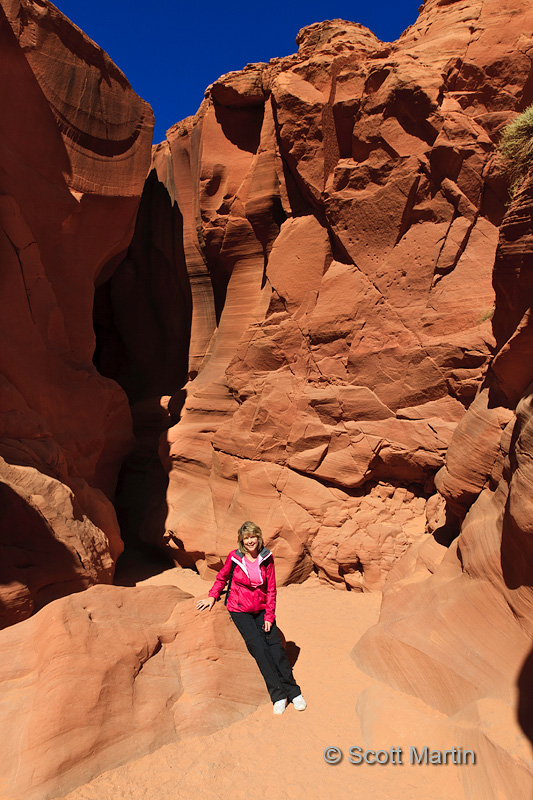
These images and a few more can be seen in the Antelope Canyon Gallery
After leaving the Antelope Canyon we travelled about ten miles to the famous Horseshoe Bend in the Colorado River which will be the focus of an upcoming blog entry.
Visiting the Antelope Slot Canyons was a fantastic experience and I would highly recommend that the next time you are in the vicinity of the Grand Canyon you make it a point to visit Page. Page Arizona is in the north central part of the state and is about a four drive from either Phoenix or Las Vegas.
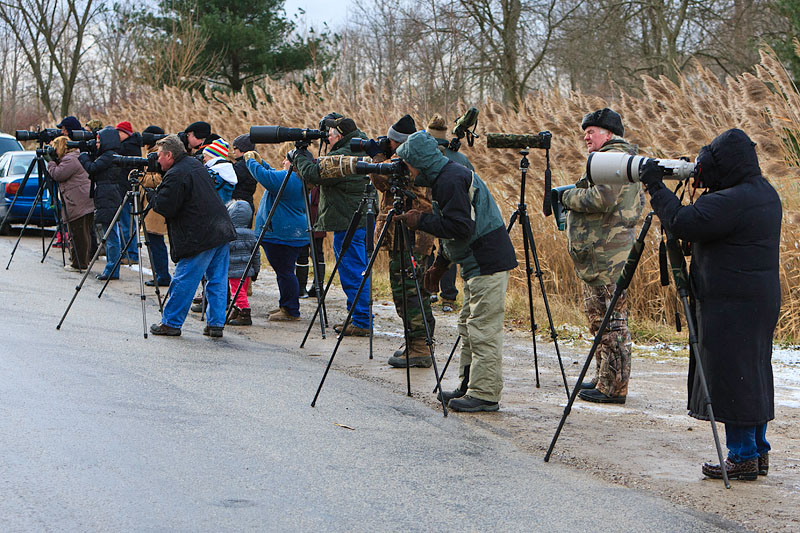
by Scott Martin Photography | Jan 6, 2012 | Birds, Blog, Raptors
Not surprisingly a Great Gray Owl created a big stir this winter when it showed up in Kingsville, Ontario (a small town on the north shore of Lake Erie between Point Peele & Windsor, Ontario) and many people have made the effort to travel great distances to see it. From Oshawa, it was an almost five-hour drive that I was able to make this past Monday and it was a great relief to be able to find the owl after driving all that way! As you can see many other people also wanted to see this magnificent owl.

Although the Owl was pretty much oblivious to the people around, the birders and photographers were very respectful of it and positioned themselves on the other side of the road from the owl as you can see from the above image. This allowed the owl to hunt without distraction or obstruction.
The processing of images from Monday will be an ongoing project and I’ll post some as they get done in the next few weeks. It was an interesting day photographing the Great Gray Owl with everything from an iPhone to 24-105, 70-200, 400, 500 & 700 focal length lenses.
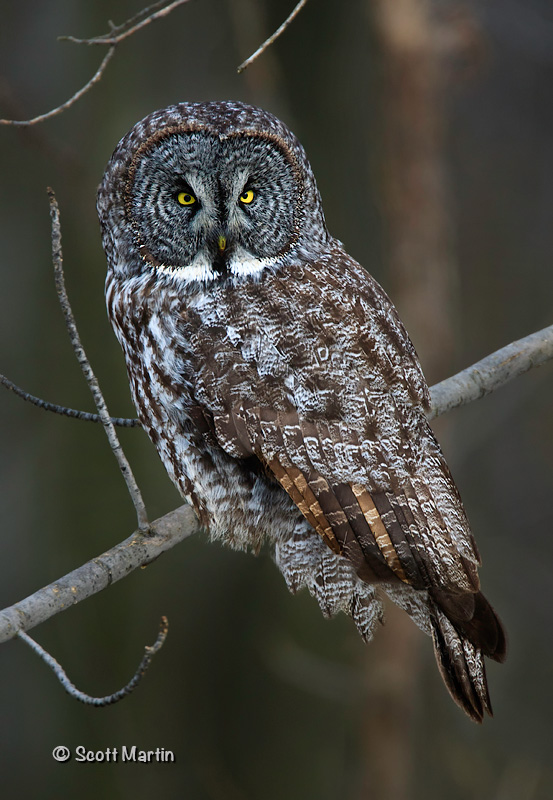





























Follow Scott Martin Photography